


Gauteng MEC for Health Dr Bandile Masuku visits Diepsloot COVID-19 screening and testing site at Diepsloot Sarafina Park in May (Photo by Sharon Seretlo/Gallo Images via Getty Images)
- Week on week, the percentage of people testing positive has increased to 26.7% of all tests nationally, which may be a product of targeted testing.
- The public remains in the dark about testing strategies and backlogs as government-run labs see a marked decrease in tests done daily.
- Of the more than two million coronavirus tests conducted nationwide since February, 35% of those tests were conducted on people living in Gauteng.
This week, Gauteng overtook the long-standing hotspot for Covid-19, the Western Cape, in terms the outright number of people infected with coronavirus.
But as of 9 July, Gauteng has also tested nearly double the number of people – 705 472 tests compared with 379 429 tests in the Western Cape.
But in May this year, the former acting director general for the Department of Health, Dr Anban Pillay, told the SABC that Gauteng was moving toward a more targeted testing strategy.
This means tests are reserved for people presenting with symptoms at healthcare facilities, and those who have been in direct and sustained contact with a person who tests positive.
Pillay at the time said a mass screening programme had “not delivered the outcomes” the department had hoped for.
One indicator of this change in testing strategy could be found in the percentage of positive tests week-on-week, reported weekly by the National Institute of Communicable Diseases (NICD).
Since mid-May, the number of tests conducted weekly has remained relatively stable around the 150 000 mark – but the percentage of people testing positive for Covid-19 has increased – from 6.8% to 26.7%.
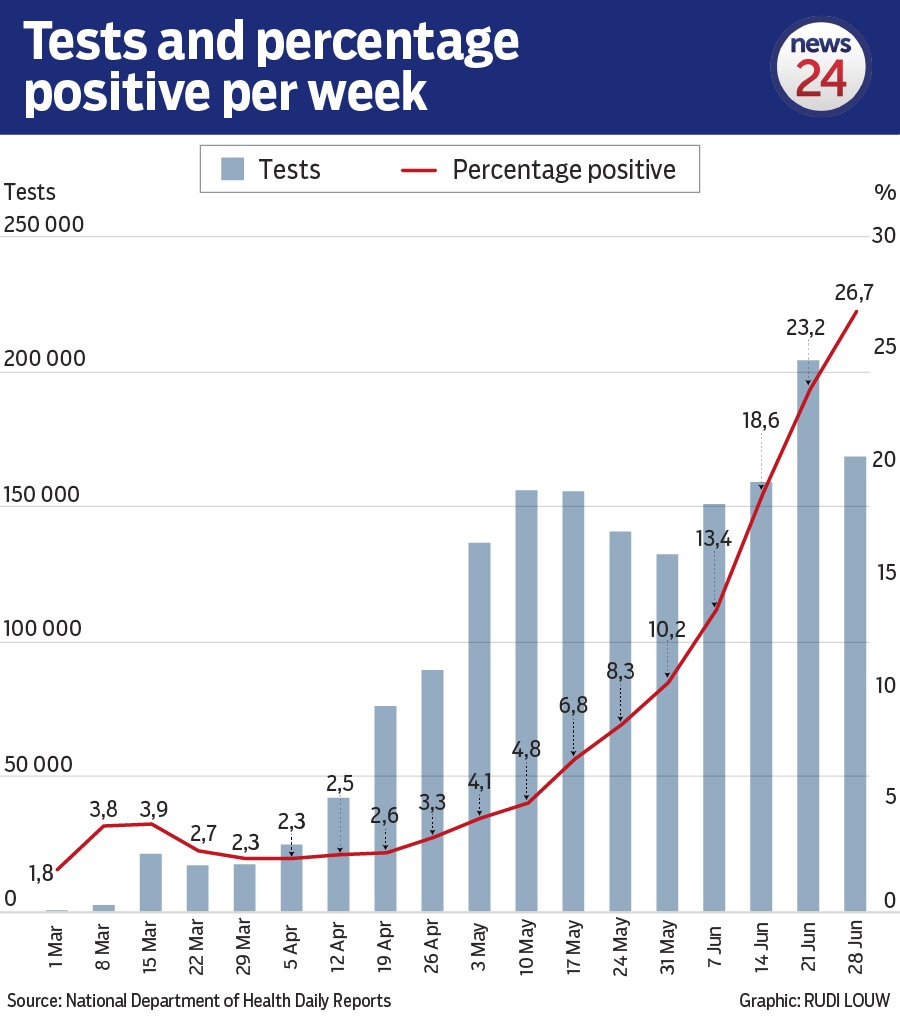


A surge in cases in Gauteng has contributed the majority of cases since mid-June – having overtaken the Western Cape in terms of weekly growth. The Eastern Cape and KwaZulu-Natal have also seen significant increases in case growth.
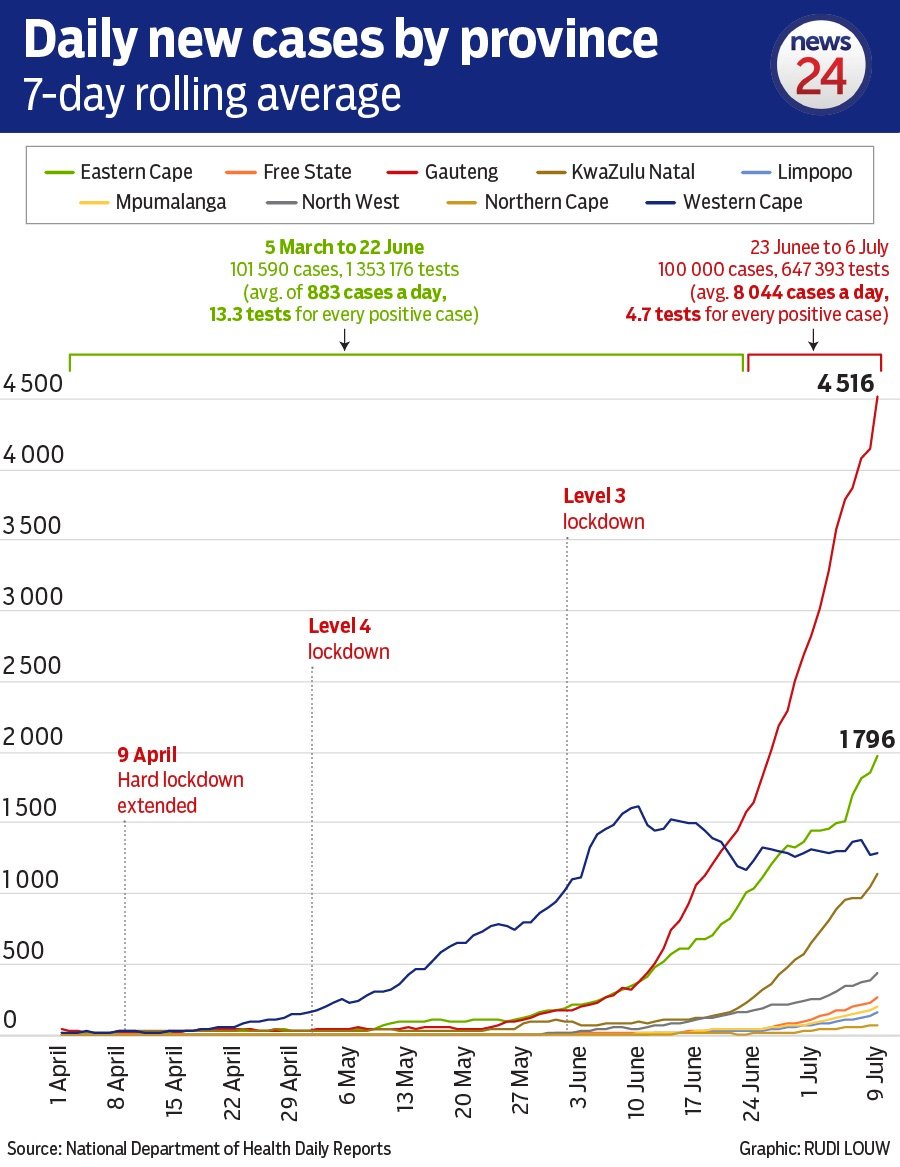


When positive cases and tests are mapped daily on a seven-day moving average, South Africa is still on a steep upward trajectory.
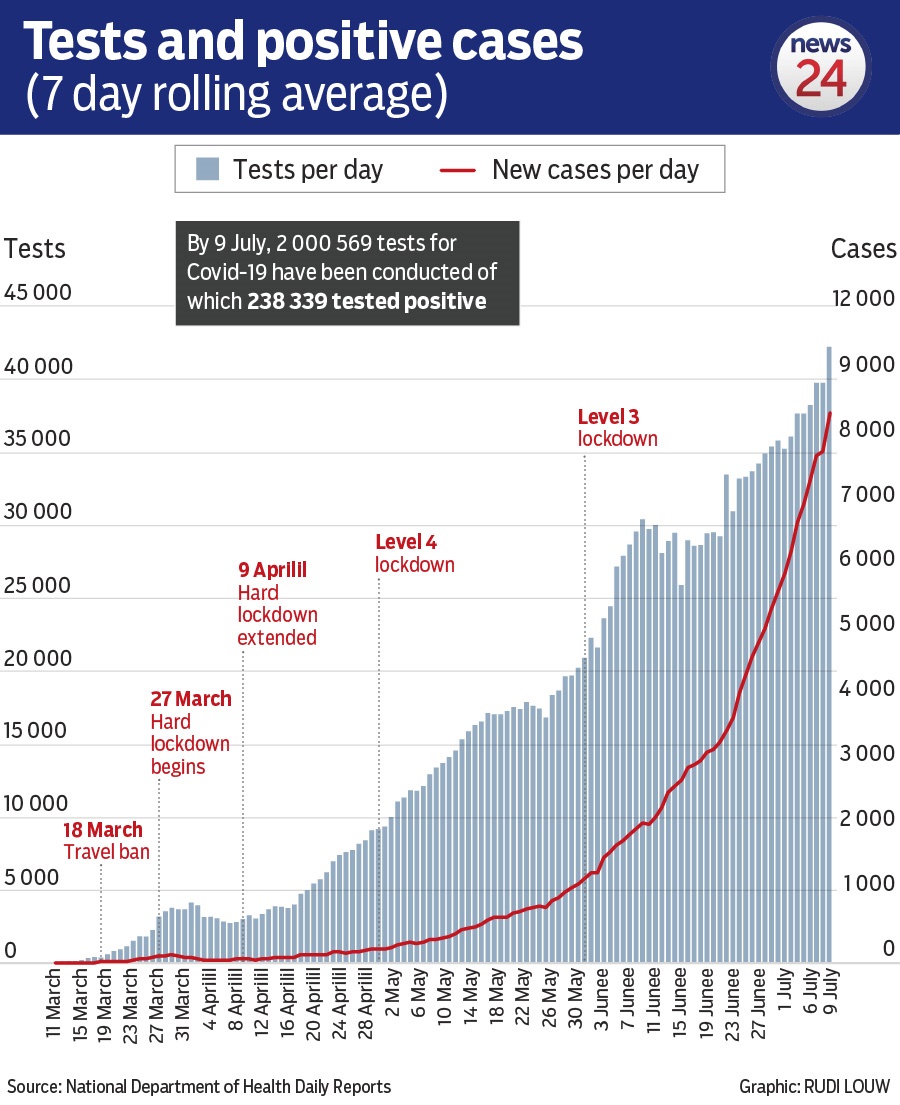


Testing in public laboratories has seen a significant decline in recent weeks, which has, on only a handful of occasions, topped 15 000 tests a day since mid-June, compared with roughly 25 000 tests in the private sector a day.
The private sector has, despite facing supply shortages similar to the public sector, maintained a steady growth overall in the number of tests conducted daily.
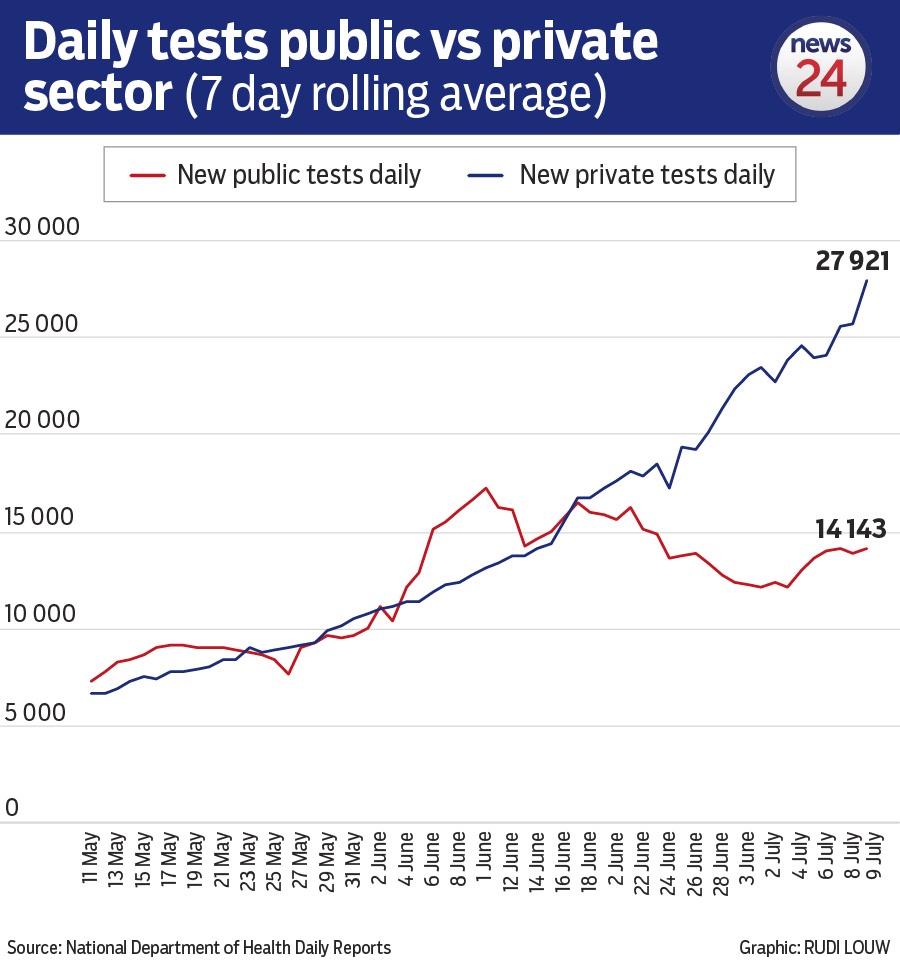


While cases are surging in Gauteng, the number of recoveries is also increasing steadily. But the number of deaths in the province remain lower than the Eastern Cape, which has recorded roughly half the cases seen in Gauteng.
As of Friday, 515 people had died in Gauteng, while 610 deaths had been recorded in the Eastern Cape – but Gauteng had recorded roughly the same number of recoveries. The Western Cape still has the highest death toll, with 2 229 deaths of the 3 720 national total.
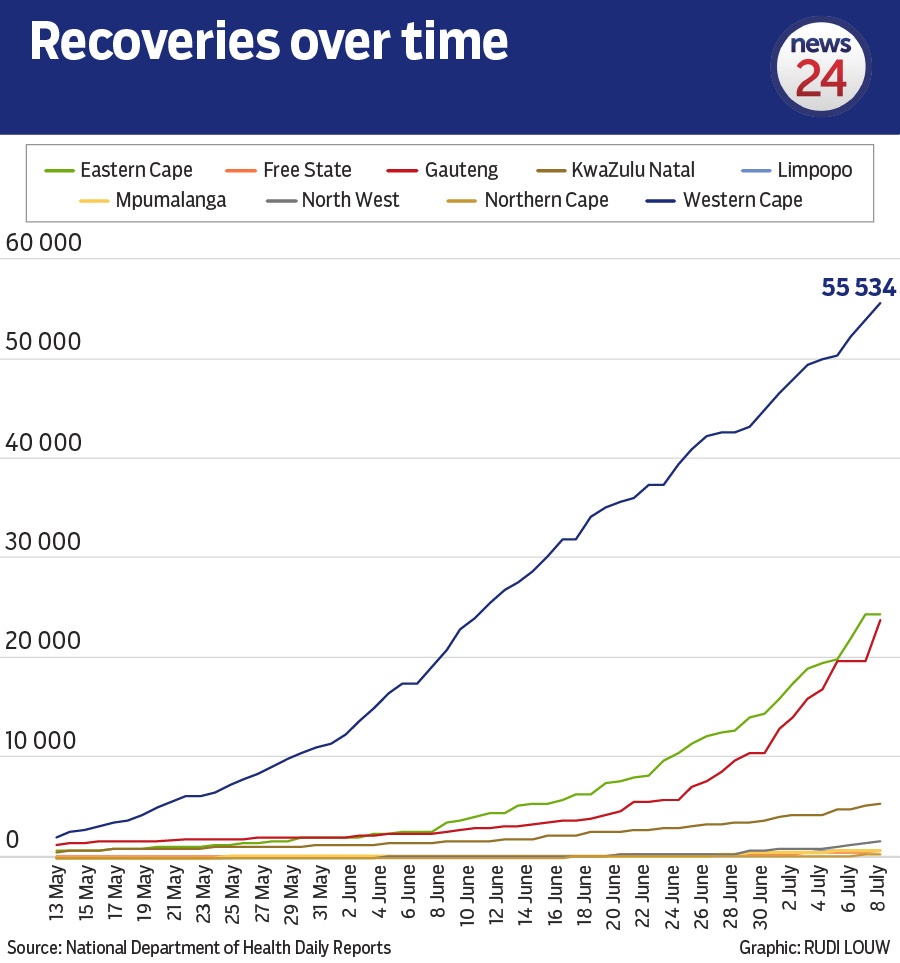


This has led to Gauteng having a significantly higher number of concurrent active cases – a rough indicator found by deducting the number of deaths and recoveries from the number of cumulative cases.
NICD epidemiologists have warned against using the active cases measure as an indicator, due to the delay in registration of recoveries and the varying amount of days recorded for people to lose the battle with Covid-19.
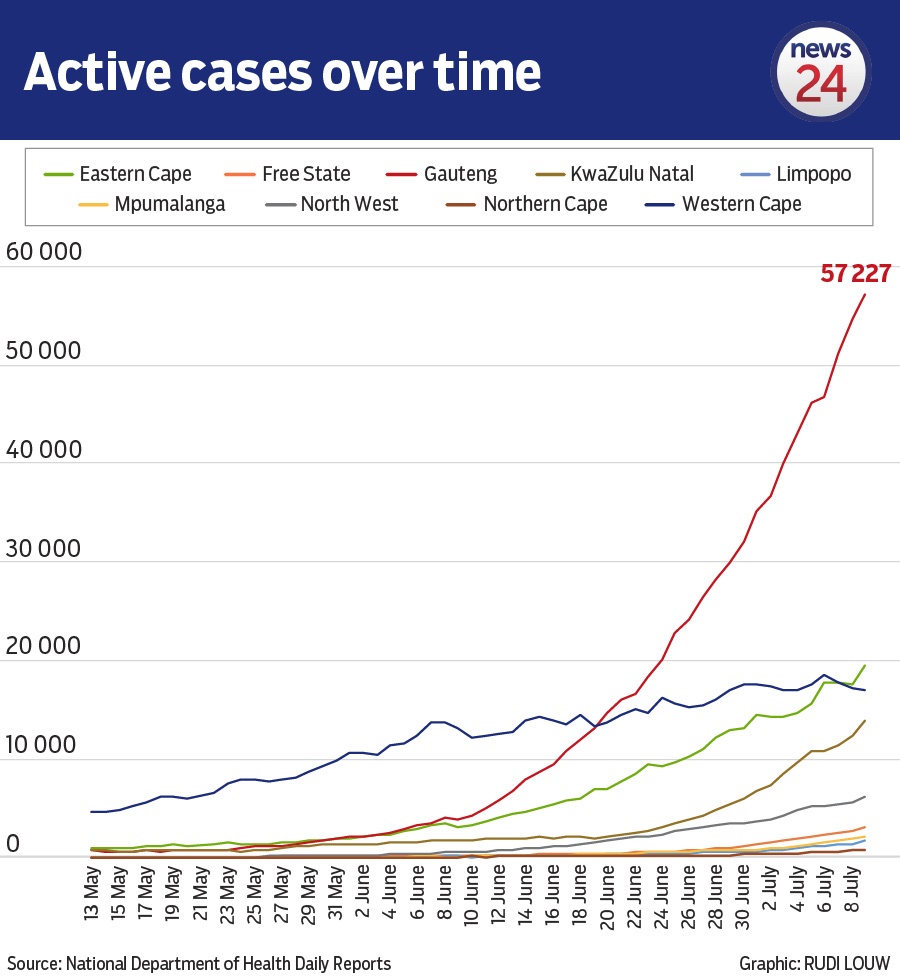


While the Gauteng province has recorded the highest number of cases cumulatively, the largest contributor to the overall case increase has been Johannesburg.



The hardest-hit sub-district in Johannesburg is “Health District D” – which is comprised of Doornkop, Soweto, Dobsonville and Protea Glen.
As of 9 July, 8 327 cases had been recorded in these suburbs.
This is closely followed by Health District F with 7 717 cases, which is inner city Johannesburg and Johannesburg South.
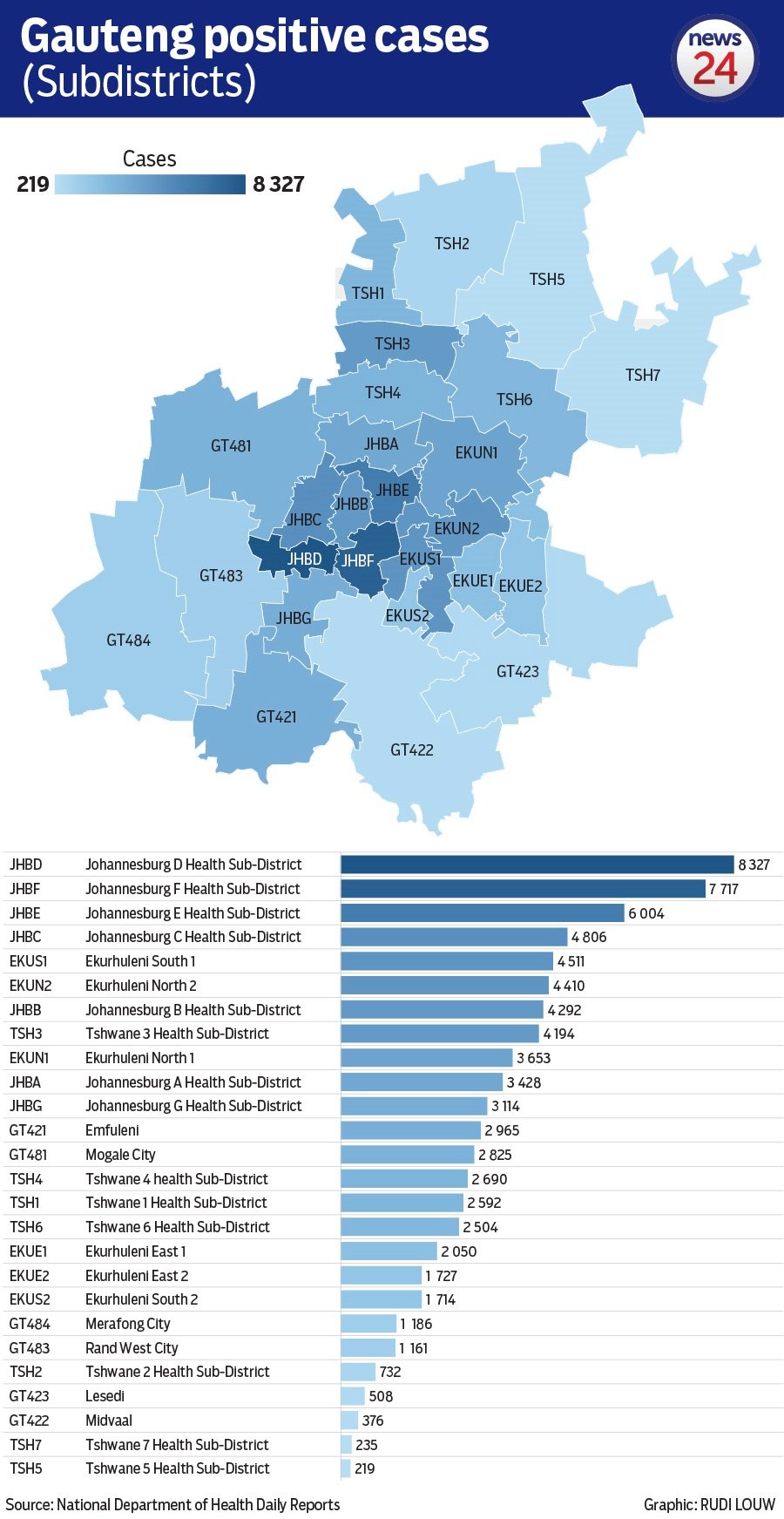


Stay informed about all the latest coronavirus developments.

